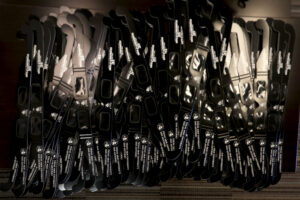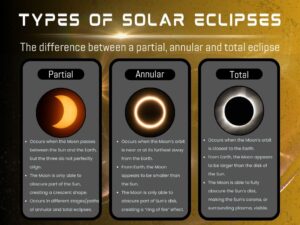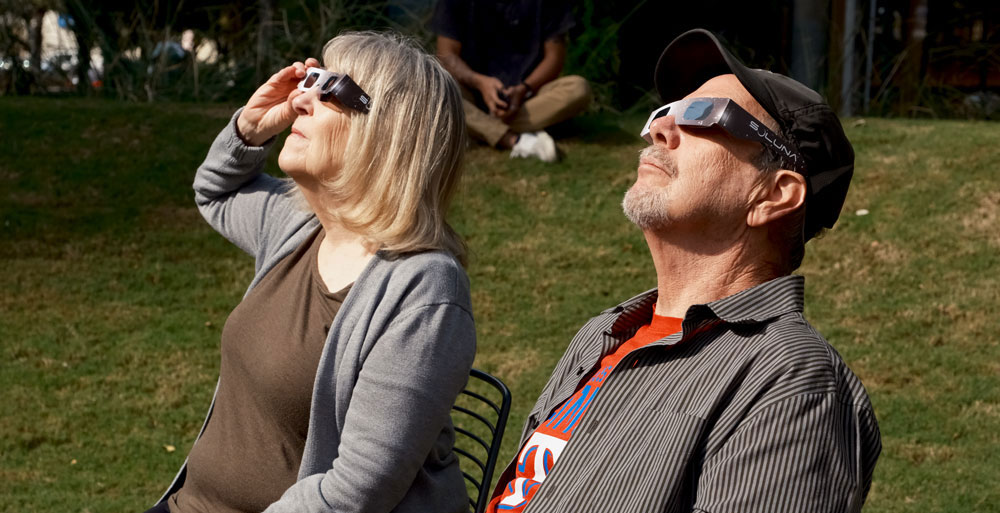Texas A&M University-San Antonio will host a solar eclipse viewing party 11:45 a.m.-1:30 p.m. April 8 on the East Lawn.
Attendees will see a partial solar eclipse, a campus expert says.
The event is organized by the College of Arts and Sciences and sponsored by departments that assisted in acquiring the eclipse glasses including the Office of Marketing and Communication, College of Education, Business Affairs and Dean of Students.
Marcom will pass out T-shirts, totes and notepads and the College of Arts and Sciences will distribute water.
Cynthia Alejos, a business administrator for the College of Arts and Sciences, said that the time frame of the event will be mostly spent passing out the 5,000 glasses they acquired through the help of sponsors.

“The actual event to watch the eclipse is probably going to be five minutes,” said Alejos. “We’re just going to be out there on the field, you know, sharing water, sharing swag from MarCom, and that’s about it. It’s very informal.”
The eclipse is expected to begin around 1:30 and end at about 1:50 p.m.
People in Texas can expect to see the eclipse for a shorter amount of time if they are in the center of the pathway, according to the San Antonio Express-News, which designed a map of the eclipse’s path in San Antonio.
Dr. Debra Feakes, the dean of the College of Arts and Sciences, said the event is open to anyone on campus because of the large amount of glasses.
“I think anyone who’s on campus would be able to join in,” Feakes said. “I mean, we bought so many [glasses] because we were hoping people would come visit.”
Alejos, the brains behind the event, wanted to host it because the solar eclipse is a historic event.
“It’s history in the making, and I just felt as a campus we should be a part of it and enjoy it,” Alejos said. “We’re fortunate enough that it’s happening here in Texas, and so I felt like it was an event that we should really be a part of as a community.”
Aaron Guerrero, civic engagement coordinator for the Mays Center for Experiential Learning and Community Engagement, created the JagSync page of the solar eclipse viewing party for anyone willing to volunteer and to show the organizations that supported the event financially.
“We needed around 20 people to hand out the glasses and work the table for the event,” Guerrero said. “We recruited from every department with many of those people wanting to volunteer. Two more volunteers were added after we made the quota.”
Guerrero said volunteers will receive an email before the event begins.
Guerrero is also excited to see the total solar eclipse after he saw a lunar eclipse at Mission San Jose.
“I think the event will be fun,” Guerrero said. “The ring of fire that happened during the lunar eclipse was cool to see and I have heard conflicting reports on whether we will see a similar ring of fire on campus.”

People viewing from campus will see a partial solar eclipse, said Dr. Mirley Balasubramanya, chair of the Department of Computational, Engineering, and Mathematical Sciences. This means the moon will not completely cover the sun from this vantage point.
On April 8, the moon will move directly between the sun and Earth, casting a shadow.
Balasubramanya said a person’s viewing experience is determined by their location.
On Monday, people in Northwest San Antonio will experience a total solar eclipse.
“If you hold an object against a light, all the light in that region will be blocked,” Balasubramanya said. “Light that would have ordinarily come from the sun to the earth is being blocked by the moon only in this region.”
When looking at the eclipse, it is crucial that you only use certified solar eclipse glasses.
“You shouldn’t use homemade filters; you should not wear ordinary sunglasses or welding glasses,” Balasubramanya said.
Viewing the eclipse without proper eye protection can cause permanent damage to the eye’s retina.
The only time it is safe to view the eclipse without glasses is during the window when the sun is completely covered. That window can vary between 30 seconds and several minutes, according to the Express-News article.
“If you see the very completely blocked sun with your naked eye, that will be safe,” Balasubramanya said. “So because from campus the eclipse is not total, I would not recommend looking directly at the eclipse.”
For any questions about the event, email Cynthia Alejos at calejos@tamusa.edu.






